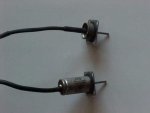m37brat
Member
- 74
- 0
- 6
- Location
- Marshfield, Ma
I have an original M43 and I have been going through coils like water. At first it only happened if the ignition switch was left on with the engine off. Today I burned up 2 coils while driving the truck to a show. They went while the truck was traveling at 45 MPH. Is it possible that the capacitor is bad? Is there a resistor in the system somewhere? Any help would be greatly appreciated.
Thanks.
Thanks.
Last edited:



